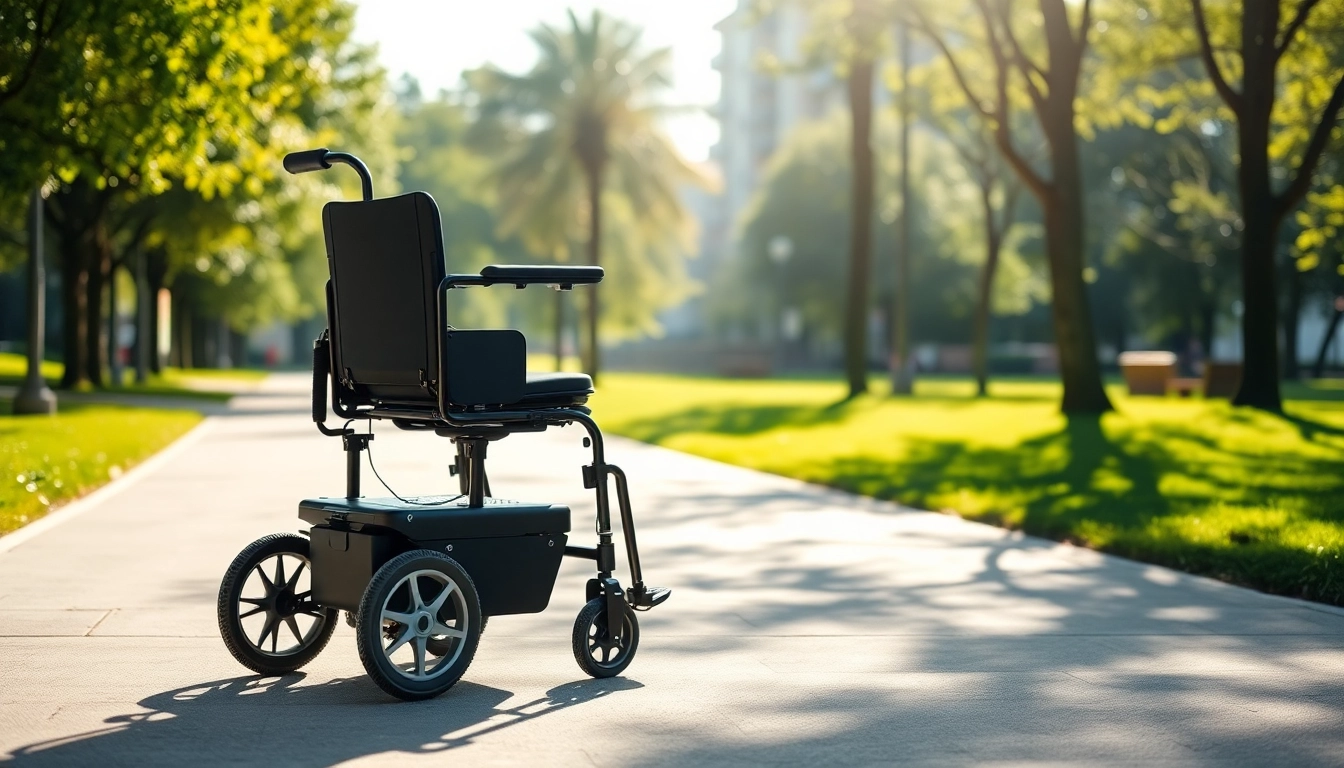Understanding Electric Wheelchairs and Their Benefits
Electric wheelchairs have revolutionized the way individuals with mobility challenges navigate their world, providing them with essential independence and flexibility. These sophisticated devices are designed to cater to various needs, offering a perfect blend of comfort, functionality, and adaptability. In this comprehensive guide, we will dive deeply into the features, types, benefits, and considerations surrounding the Electric Wheelchair, ensuring that you gain a thorough understanding of how to enhance mobility and independence.
What is an Electric Wheelchair?
An electric wheelchair, also known as a power wheelchair, is a mobility device that assists individuals with limited mobility due to physical disabilities or age-related conditions. Unlike traditional manual wheelchairs, which require physical effort to propel, electric wheelchairs utilize motors powered by batteries, allowing users to move effortlessly. These devices can be controlled using joystick mechanisms, buttons, or switches, accommodating a wide range of user capabilities.
Key Benefits of Using an Electric Wheelchair
- Enhanced Mobility: Electric wheelchairs empower users by making it easier to navigate various terrains, whether indoors or outdoors. Their robust designs often include advanced wheel technology, allowing users to traverse grass, gravel, and even curbs.
- Improved Independence: Many users find that transitioning to an electric wheelchair significantly improves their independence. They can perform daily tasks without relying on others, which contributes to their overall quality of life.
- Comfort and Safety: Electric wheelchairs are designed for comfort, often coming equipped with adjustable seating, armrests, and back support. Additionally, many models incorporate safety features such as anti-tip systems and reliable braking functions.
- Customizability: These wheelchairs can often be customized to meet specific physical requirements, ensuring the appropriate fit and accessibility for each user.
Who Can Benefit from Electric Wheelchairs?
Electric wheelchairs are suitable for a diverse range of individuals, including:
- People with mobility impairments due to physical disabilities, such as spinal cord injuries, multiple sclerosis, or muscular dystrophy.
- Older adults who have lost mobility due to age-related conditions.
- Individuals recovering from surgeries or medical conditions that may impair their mobility temporarily.
Types of Electric Wheelchairs Available
Standard Electric Wheelchair Models
Standard electric wheelchair models are designed for everyday use. They typically offer a balance between comfort, durability, and adaptability, making them suitable for indoor and outdoor environments. Most standard models are equipped with features that cater to individuals who require assistance but do not need specialized adaptations for their wheelchairs.
Portable Electric Wheelchairs for Travel
For those who travel frequently, portable electric wheelchairs are an excellent option. These models are often foldable and lightweight, allowing users to transport them easily in vehicles or when flying. Features such as rapid folding mechanisms, travel-ready designs, and compact structures make these wheelchairs ideal for users on the go.
Heavy-Duty Electric Wheelchairs for Greater Support
Heavy-duty electric wheelchairs are built to support individuals with higher weight capacities. These models prioritize durability, providing robust materials and enhanced stability. They typically come equipped with powerful motors and larger batteries to accommodate heavier users and ensure adequate range of movement.
Features to Consider When Selecting an Electric Wheelchair
Weight Capacity and Size Considerations
Before purchasing an electric wheelchair, understanding the weight capacity and sizing is crucial. Each model may vary in terms of weight limits, and selecting one that matches the user’s size is essential for both comfort and safety. Users should consider measurements such as seat width, depth, and height to ensure a proper fit.
Battery Life and Range of Electric Wheelchairs
Battery life is a significant consideration when selecting an electric wheelchair. Users should evaluate how far they typically travel in a day and choose a wheelchair with sufficient battery range to meet their needs. Many modern wheelchairs use lithium-ion batteries, which tend to provide longer lifespan and faster charging capabilities.
Comfort Features and Customization Options
Comfort is paramount for electric wheelchair users, especially for prolonged use. Features such as cushioned seating, adjustable armrests, and supportive backs are essential. Additionally, many models offer customization options, allowing users to modify their wheelchairs for specific requirements, including tilt, recline, or elevation functions.
How to Maintain Your Electric Wheelchair
Routine Cleaning and Care Guidelines
Proper maintenance can significantly extend the lifespan of an electric wheelchair. Regular cleaning is necessary to prevent dirt build-up and ensure smooth operation. Users should clean the wheelchair frame, wheels, and electronics with a damp cloth, avoiding harsh chemicals that may damage surfaces.
Battery Maintenance Tips for Longevity
To maintain the battery’s efficiency, users should adhere to several critical practices:
- Avoid complete discharge of the battery; instead, recharge it regularly to keep it at optimal levels.
- Store the wheelchair in a dry and temperature-controlled environment.
- Perform periodic checks on battery connections to ensure they are clean and free of corrosion.
Signs That Your Electric Wheelchair Needs Repairs
Users should remain vigilant for signs that their electric wheelchair may need repairs, such as:
- Unusual noises while operating.
- Frequent battery declines in performance or quick discharge.
- Difficulties steering or controlling the wheelchair.
Cost and Accessibility of Electric Wheelchairs
Understanding Pricing for Different Models
The price of electric wheelchairs can vary significantly based on features, models, and manufacturers. Standard electric wheelchairs typically range from affordable models starting at a few hundred dollars to high-end variants that can exceed several thousand dollars. Users should assess their budget against the required features to make a suitable choice.
Insurance Coverage and Assistance Programs
Many insurance policies offer coverage for electric wheelchairs, particularly when prescribed by a healthcare professional. It is essential for users to consult their insurance provider to understand eligibility, specifications required for coverage, and the necessary documentation process. Additionally, various assistance programs may be available for low-income individuals or seniors to aid in purchasing electric wheelchairs.
Finding Resources for Affordable Electric Wheelchair Options
Users seeking affordable electric wheelchair options can explore several avenues, including online marketplaces, local dealerships, or specialized mobility shops. Furthermore, government and non-profit organizations often have resources to assist in acquiring mobility aids at a reduced cost. Engaging with community support groups can also provide insights into various financing options.



